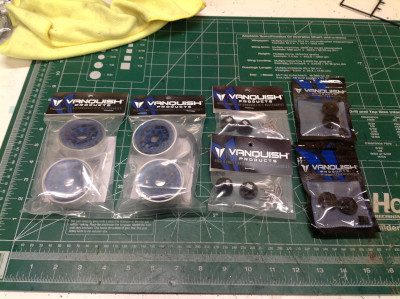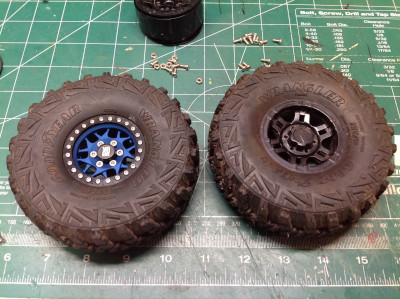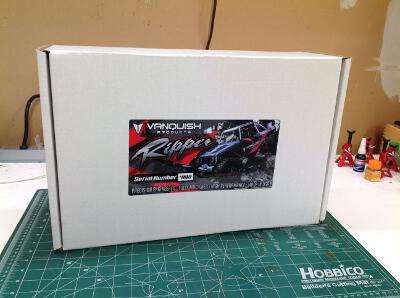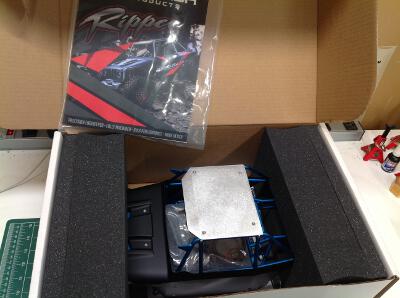

It took almost a year of waiting, but at long last the
blue anodized Bully wheels appeared back in stock and I picked up a
set. These are aluminum beadlocks. I'm using 350 offset SLW
hubs along with XD center caps. There were a lot of fasteners I
needed to install to mount these up, but the appearance is worth it.
Ground clearance? Yes please.



